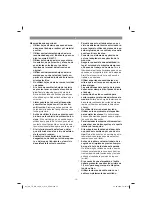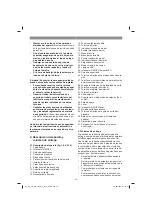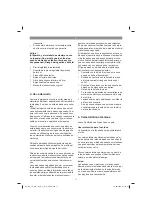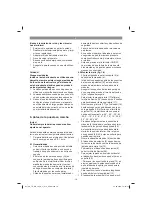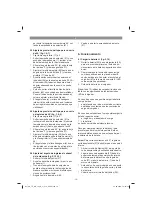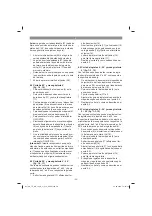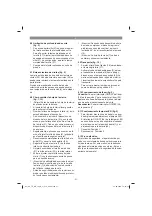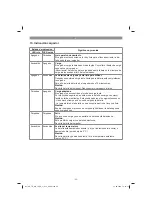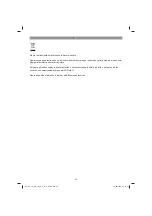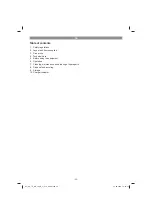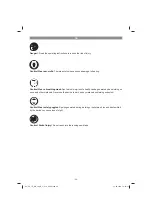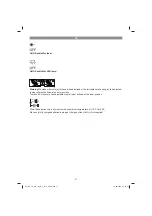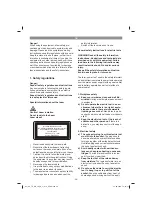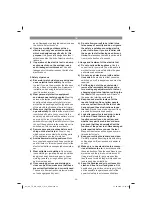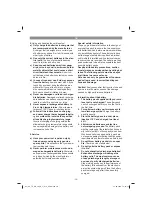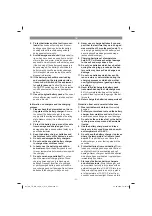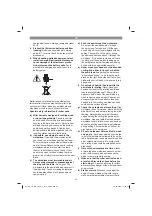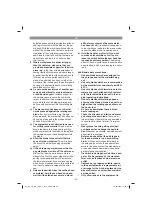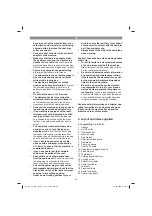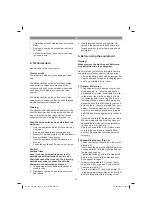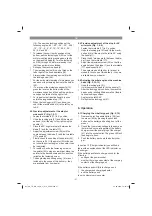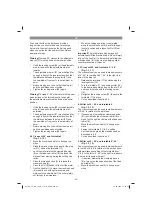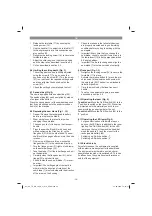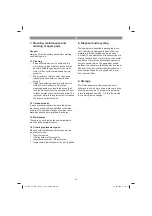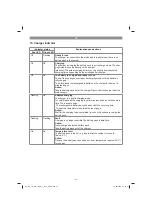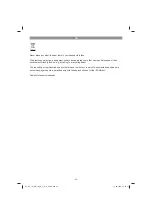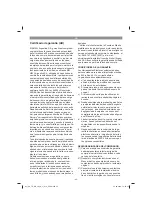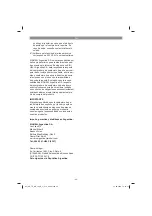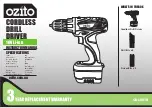
GB
- 29 -
ance. Damaged or entangled cables increase
the risk of an electric shock.
e) If you are working outdoors with an
electric tool, only use extension cables
which are designed speci
fi
cally for this
purpose.
Using specially designed outdoor
extension cables, the risk of electric shock is
reduced.
f) If operation of the electric tool in a damp
environment can not be avoided, use a
earth-leakage circuit-breaker.
The earth-
leakage circuit-breaker reduces the risk of an
electric shock.
3. Safety of persons
a) Be careful, watch what you are doing and
use an electric tool sensibly.
Do not use
the tool if you are tired or under the in
fl
uence
of drugs, alcohol or medication. A moment of
inattention when using the electric tool can
result in serious injuries.
b) Wear personal protection equipment
and always wear safety goggles.
Wearing
personal protection (such as dust masks,
non-slip safety shoes, safety helmet or ear
protection, depending upon the type and use
of the electric tool) reduces the risk of injury.
c) Make sure that the appliance cannot start
up accidentally.
Ensure that the electric tool
is switched o
ff
before you connect it to the
power supply and/or insert the battery, or pick
up or carry the tool. If your
fi
nger is on the
switch whilst carrying the electric tool or if you
connect the appliance to the mains when it is
switched on, this can lead to accidents.
d) Remove keys and wrenches before swit-
ching on the electric tool.
A tool or key
which comes into contact with rotating parts
of the appliance can lead to injuries.
e) Avoid abnormal working postures.
Make
sure you stand squarely and keep your balan-
ce at all times. In this way, you can control the
electric tool better in unexpected circumstan-
ces.
f) Wear suitable work clothes.
Do not wear
loose clothing or jewellery. Keep hair, clothes
and gloves away from moving parts. Loose
clothing, jewellery or long hair can get trap-
ped in moving parts.
g) If vacuuming devices and draining de-
vices can be
fi
tted, make sure that these
are correctly attached and correctly used.
The use of a dust extraction system can redu-
ce the danger posed by dust.
h) Do not allow yourself to be lulled into a
false sense of security and do not ignore
the safety regulations covering electric
power tools, even if you are familiar with
the power tool after having used it many
times.
Carelessness can lead to serious inju-
ries in just a fraction of a second.
4. Usage and treatment of the electric tool
a) Do not overload the appliance.
Use the
correct tool for your work. You will be able to
work better and more safely within the given
performance boundaries.
b) Do not use an electric tool with a defec-
tive switch.
An electric tool that cannot be
switched on or o
ff
is dangerous and must be
repaired.
c) Pull the plug out of the socket and/or
remove the removable battery pack be-
fore making any adjustments to the tool,
changing plug-in tool parts or putting the
tool down.
These precautions will prevent
the power tool starting accidentally.
d) Keep unused electric tools out of the
reach of children. Do not allow people
who are not familiar with the tool or who
have not read these instructions to use
the tool.
Electric tools are dangerous if they
are used by inexperienced people.
e) Look after power tools and plug-in tools
with care. Check that moving parts
function correctly and do not jam, and
whether any parts are broken or dama-
ged such that they adversely a
ff
ect the
function of the power tool. Have damaged
parts repaired before you use the tool.
Many accidents are caused by poorly main-
tained electric tools.
f) Keep your cutting tools sharp and clean.
Carefully maintained cutting tools with sharp
cutting edges will jam less and are easier to
control.
g) Make sure to use electric tools, accesso-
ries, attachments, etc.
in accordance with
these instructions. Take the conditions in your
work area and the job in hand into account.
Using electric tools for any purpose other
than the one for which they are intended can
lead to dangerous situations.
h) Keep the handles and grip surfaces dry,
clean and free from oil and grease.
If the
handles and grip surfaces are slippery, it will
not be possible to operate and control the
power tool safely in unforeseen situations.
Anl_SA_TE_MS_18_20_Li_Solo_SPK8.indb 29
Anl_SA_TE_MS_18_20_Li_Solo_SPK8.indb 29
15.03.2018 14:19:54
15.03.2018 14:19:54

